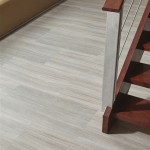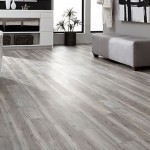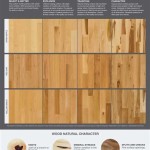Prefinished Hardwood Flooring Cost Per Square Foot: A Comprehensive Guide
Prefinished hardwood flooring offers a convenient and aesthetically pleasing flooring option for residential and commercial spaces. Unlike unfinished hardwood, which requires sanding, staining, and sealing after installation, prefinished hardwood arrives ready to install, significantly reducing installation time and mess. Understanding the cost per square foot for prefinished hardwood flooring is crucial for budgeting and planning a flooring project. This article provides a detailed breakdown of the factors influencing the price, including wood species, grade, thickness, finish, installation costs, and regional variations.
The cost of prefinished hardwood flooring is influenced by a multitude of variables, making it essential to consider each factor carefully to accurately estimate the overall project expense. Ignoring these variables can lead to significant discrepancies between the initial budget and the final cost.
Key Factors Influencing Prefinished Hardwood Flooring Cost
Several key elements contribute to the overall cost per square foot of prefinished hardwood flooring. These encompass material costs, installation fees, and any supplementary expenses encountered during the installation process. A thorough understanding of each component is essential for efficient budgeting and informed decision-making.
1. Wood Species and Grade:
The type of wood significantly impacts the price. Common options include oak, maple, hickory, and exotic species like Brazilian cherry or bamboo. Each wood species possesses unique characteristics, such as hardness, grain patterns, and color variations, which influence its market value.Oak, both red and white, is a popular and relatively affordable choice, known for its durability and distinctive grain. Maple offers a smoother, more uniform appearance and is slightly more expensive than oak. Hickory is exceptionally hard and durable, making it suitable for high-traffic areas, but it typically comes at a higher price point. Exotic hardwoods, due to their rarity and shipping costs, are generally the most expensive options.
The grade of the wood also affects the price. Hardwood flooring is typically graded based on its appearance, including the presence of knots, mineral streaks, and color variations. Clear grade flooring is the most expensive, featuring minimal imperfections and a uniform appearance. Select grade has a few more minor imperfections, while common grade flooring contains more noticeable knots and color variations, making it the most affordable option. The choice of grade is ultimately a matter of personal preference and budget.
2. Thickness and Construction:
The thickness of the prefinished hardwood flooring significantly influences its cost and durability. Thicker planks, typically ¾ inch, are more durable and can be sanded and refinished multiple times over their lifespan. Thinner planks, such as ½ inch or ⅜ inch, are less expensive but may not offer the same longevity or refinishing potential.The construction of the flooring also plays a role in the cost. Solid hardwood flooring is made from a single piece of wood, while engineered hardwood flooring consists of a thin veneer of hardwood bonded to a core of plywood or high-density fiberboard (HDF). Solid hardwood flooring is generally more expensive than engineered hardwood, but engineered hardwood offers greater stability in environments with varying humidity levels.
3. Finish and Texture:
The type of finish applied to the prefinished hardwood flooring affects not only its appearance but also its durability and cost. Common finishes include polyurethane, acrylic, and oil-based finishes. Polyurethane finishes are highly durable and resistant to scratches and stains, making them a popular choice for high-traffic areas. Oil-based finishes provide a more natural look and feel but may require more frequent maintenance.The texture of the flooring can also influence the price. Smooth, glossy finishes are generally less expensive than hand-scraped or distressed finishes, which require more labor to create. Hand-scraped finishes mimic the look of antique flooring, adding character and visual interest to the space. Distressed finishes feature intentional imperfections, such as knots, cracks, and wormholes, to create a rustic aesthetic.
Detailed Cost Breakdown
Breaking down the cost per square foot allows for a more precise understanding of where expenses originate. This detailed analysis helps homeowners and business owners make informed decisions based on their budget and desired outcome.
1. Material Costs:
The material cost encompasses the price of the prefinished hardwood flooring itself. As previously mentioned, this cost varies depending on the wood species, grade, thickness, and finish. On average, prefinished hardwood flooring can range from $3 to $15 per square foot for the materials alone. More exotic or high-end options can even exceed this range.For instance, a basic oak prefinished hardwood might cost $3-$6 per square foot, while a higher-grade hickory could range from $6-$10 per square foot. Exotic species like Brazilian cherry can easily reach $8-$15 or more per square foot.
2. Installation Costs:
Installation costs vary depending on the complexity of the project, the condition of the subfloor, and the geographic location. Professional installation is generally recommended to ensure proper acclimation, secure attachment, and a seamless finish. Installation costs typically range from $3 to $8 per square foot.Factors that can increase installation costs include: removal of existing flooring, subfloor preparation (leveling, repairing damage), intricate patterns or designs, and installation in challenging areas, such as stairs or small spaces. It is advisable to obtain multiple quotes from qualified flooring installers to compare pricing and services.
3. Additional Costs:
Beyond the material and installation costs, several additional expenses may arise during the flooring project. These can include the cost of underlayment, moldings and transitions, adhesives or fasteners, and waste disposal. Underlayment provides a cushioning layer, reduces noise transmission, and can improve the insulation properties of the flooring. Quality underlayment usually costs between $0.50 and $2.00 per square foot.Moldings and transitions are used to create a finished look around the perimeter of the room, doorways, and stairs. Matching moldings and transitions can add to the overall cost of the project. The cost of adhesives or fasteners will depend on the type of flooring and the installation method. Waste disposal fees may apply if the installer does not include waste removal in their quote.
Regional Variations and Market Dynamics
The cost of prefinished hardwood flooring can fluctuate based on geographic location and prevailing market conditions. These variations often arise from differences in labor costs, material availability, and local demand.
1. Geographic Location:
Labor costs vary significantly across different regions. Areas with a higher cost of living generally have higher labor rates for flooring installers. Supply chain logistics and transportation costs can also influence material prices. Regions closer to hardwood lumber mills may benefit from lower material costs.
2. Market Dynamics:
Economic factors, such as housing market trends and consumer spending, can impact the demand for prefinished hardwood flooring. During periods of economic growth, increased demand may drive up prices. Conversely, during economic downturns, reduced demand may lead to lower prices.Seasonal variations can also play a role. Demand for flooring installation may peak during the spring and summer months, potentially leading to higher prices due to increased competition among installers. It is advisable to research local market conditions and obtain quotes from multiple suppliers and installers to ensure competitive pricing.
In summary, when considering prefinished hardwood flooring, the cost per square foot is affected by species and grade, thickness and construction, finish and texture, installation complexities, and even the location where the work is being done. Planning, research, and comparison shopping are all crucial pieces to a successful project.

Average Hardwood Flooring S In 2024 Forbes Home

Engineered Timber Flooring Cost In Sydney Updated 2024 Floorvenue

Hardwood Flooring How Much Does Cost In

18mm Pacific Spotted Gum Pre Finished Solid Timber For 99

How Much Does Hardwood Flooring Cost 2024 Guide

Hardwood Flooring Costs In New Zealand The Handyman Group S Comprehensive Guide News

Prefinished Hardwood Floors Vs Unfinished P Daigle Flooring Inc

How Much Does Hardwood Flooring Cost 2024 Guide

Wood Floor Lists A1 Floors

How Much Does Hardwood Flooring Cost 2024 Guide
Related Posts








